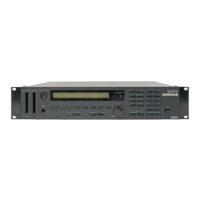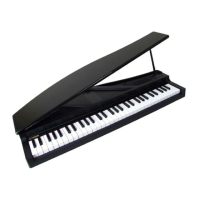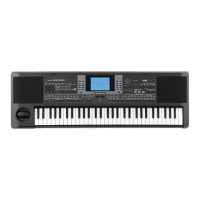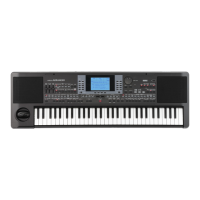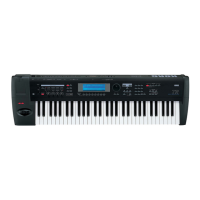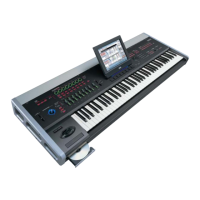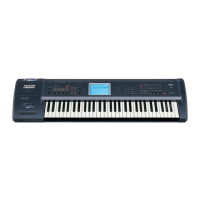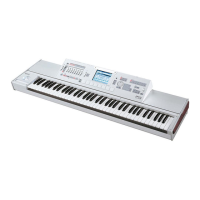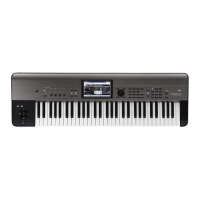





Do you have a question about the Korg M3 and is the answer not in the manual?
Highlights the key features of the M3, including its sound generator, controllers, and connectivity.
Details the layout and functions of the M3's front panel controls and connectors.
Details the layout and functions of the M3's rear panel connectors and ports.
Explains the six main operational modes of the M3 and their primary functions.
Explains how to select the appropriate mode to access M3 functions.
Explains how to connect the power cable and turn the M3 on and off.
Guides on connecting the M3 to various external devices.
Describes various methods for selecting programs, including using the display and footswitches.
Details the joystick, ribbon controller, SW1/SW2 switches, and their functions.
Explains basic sound editing using the M3's front panel control surface.
Provides an overview of the various pages available for detailed program editing.
Describes various methods for selecting combinations, including using the display and footswitches.
Introduces the M3's sequencer capabilities for creating songs.
Details the necessary preparations before starting MIDI recording.
Provides an overview of the M3's sampling capabilities.
Explains how to make overall settings that apply to the entire M3.
Explains how to save various types of data to internal memory or external media.
Explains how to format media and perform file operations.
Lists the types of data that can be loaded from media onto the M3.
Addresses issues related to the M3 not turning on.
Provides solutions for display problems and abnormal M3 operation.
Explains error messages related to ADC overload and user confirmation prompts.
Details the technical specifications of the M3 keyboard and sound module.
Lists the available optional hardware boards for enhancing the M3's capabilities.
Highlights the key features of the M3, including its sound generator, controllers, and connectivity.
Details the layout and functions of the M3's front panel controls and connectors.
Details the layout and functions of the M3's rear panel connectors and ports.
Explains the six main operational modes of the M3 and their primary functions.
Explains how to select the appropriate mode to access M3 functions.
Explains how to connect the power cable and turn the M3 on and off.
Guides on connecting the M3 to various external devices.
Describes various methods for selecting programs, including using the display and footswitches.
Details the joystick, ribbon controller, SW1/SW2 switches, and their functions.
Explains basic sound editing using the M3's front panel control surface.
Provides an overview of the various pages available for detailed program editing.
Describes various methods for selecting combinations, including using the display and footswitches.
Introduces the M3's sequencer capabilities for creating songs.
Details the necessary preparations before starting MIDI recording.
Provides an overview of the M3's sampling capabilities.
Explains how to make overall settings that apply to the entire M3.
Explains how to save various types of data to internal memory or external media.
Explains how to format media and perform file operations.
Lists the types of data that can be loaded from media onto the M3.
Addresses issues related to the M3 not turning on.
Provides solutions for display problems and abnormal M3 operation.
Explains error messages related to ADC overload and user confirmation prompts.
Details the technical specifications of the M3 keyboard and sound module.
Lists the available optional hardware boards for enhancing the M3's capabilities.
| Synthesis Type | EDS (Enhanced Definition Synthesis) |
|---|---|
| Sound Engine | EDS (Enhanced Definition Synthesis) |
| MIDI | In, Out, Thru |
| Keyboard | 61-key, velocity-sensitive, aftertouch |
| Sequencer | 16-track MIDI sequencer |
| Sampling | Open Sampling System |
| Display | TouchView graphical user interface with 320x240 color TFT LCD |
| Arpeggiator | 2 polyphonic arpeggiators |
| Controllers | Joystick, Ribbon Controller |
| Outputs | L/MONO, R, Individual 1-4, Headphones |
| USB | Yes, USB MIDI |
| Storage | SD card slot |
| Combinations | 1, 792 user combinations |
| Polyphony | 120 voices (max) |
| Effects | 5 Insert effects, 2 Master effects, 1 Total effect |

